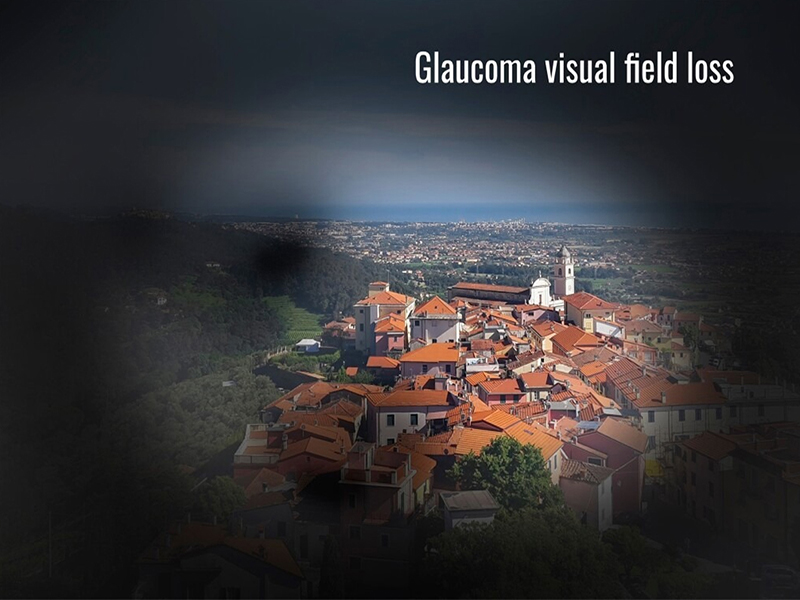Glaucoma: Causes, Symptoms, Diagnosis, and Treatment
Glaucoma is a group of eye diseases that cause damage to the optic nerve, often due to high intraocular pressure (IOP). It is a leading cause of irreversible blindness worldwide. Early detection and treatment can help slow or prevent vision loss. This article explores the causes, symptoms, diagnosis, and treatment of glaucoma in detail.
Causes and Risk Factors
Glaucoma occurs when the optic nerve is damaged, often due to increased pressure in the eye. However, it can also develop with normal eye pressure. Several risk factors contribute to the development of glaucoma:
-
Age: More common in individuals over 60, though some forms can affect younger people.
-
Family History: A genetic predisposition increases the risk, making routine eye exams essential for those with affected relatives.
-
High Eye Pressure (IOP): Increased fluid buildup can raise pressure in the eye, damaging the optic nerve.
-
Ethnicity: African Americans, Hispanics, and Asians are at higher risk due to genetic and anatomical factors.
-
Medical Conditions: Conditions like diabetes, hypertension, and cardiovascular diseases can contribute to poor optic nerve health.
-
Eye Trauma: Injury to the eye can lead to secondary glaucoma by disrupting normal fluid drainage.
-
Prolonged Corticosteroid Use: Long-term use of steroids, especially in eye drop form, can increase the risk of developing glaucoma.
-
Thin Corneas: Individuals with thinner corneas may have a higher likelihood of glaucoma, as they are less resistant to pressure changes.
-
High Myopia (Nearsightedness): Severe nearsightedness has been linked to a greater risk of open-angle glaucoma.
Types of Glaucoma
Glaucoma is classified into different types, each with distinct characteristics and treatment approaches:
-
Open-Angle Glaucoma: The most common form, characterized by gradual loss of peripheral vision without noticeable symptoms until significant damage has occurred. It progresses slowly and is often diagnosed during routine eye exams.
-
Angle-Closure Glaucoma: A sudden increase in IOP due to blocked drainage, causing severe pain, nausea, and blurred vision. This type requires immediate medical attention to prevent permanent vision loss.
-
Normal-Tension Glaucoma: Occurs even with normal IOP, possibly due to poor blood flow to the optic nerve. It is more common in individuals with vascular disorders.
-
Congenital Glaucoma: Present at birth, caused by improper development of the eye’s drainage system. Symptoms include excessive tearing, light sensitivity, and enlarged eyes.
-
Secondary Glaucoma: Develops due to underlying conditions such as inflammation, tumors, or trauma. It may also result from prolonged medication use.
Symptoms of Glaucoma
Glaucoma is often called the “silent thief of sight” because many forms progress without symptoms until advanced stages. However, depending on the type, symptoms may include:
-
Gradual loss of peripheral vision (open-angle glaucoma)
-
Severe eye pain and headache (angle-closure glaucoma)
-
Blurred vision or halos around lights
-
Redness in the eye
-
Nausea and vomiting (acute angle-closure glaucoma)
-
Difficulty adjusting to dim lighting
-
Tunnel vision in advanced cases
Diagnosis
Early detection is key to preventing vision loss. Several diagnostic tests can help identify glaucoma:
- Tonometry: Measures intraocular pressure using specialized instruments.
- Ophthalmoscopy: Examines the optic nerve for signs of damage, such as cupping or thinning.
- Perimetry (Visual Field Test): Assesses peripheral vision loss, detecting blind spots caused by glaucoma.
- Gonioscopy: Evaluates the drainage angle in the eye to determine if it is open or closed.
- Optical Coherence Tomography (OCT): Provides detailed imaging of the optic nerve and retinal nerve fibers, helping monitor disease progression.
- Pachymetry: Measures corneal thickness, as thinner corneas are associated with a higher glaucoma risk.
Treatment Options
Glaucoma treatment aims to lower intraocular pressure and prevent further optic nerve damage. Treatment options include:
1. Medications
Eye drops or oral medications help reduce IOP by decreasing fluid production or improving drainage. Common medications include:
- Prostaglandin Analogs (e.g.,Travoprost, latanoprost, bimatoprost): Increase fluid outflow.
- Beta-Blockers (e.g., timolol): Reduce fluid production in the eye.
- Alpha Agonists (e.g., brimonidine): Both decrease fluid production and improve drainage.
- Carbonic Anhydrase Inhibitors (e.g., dorzolamide, Brinzolamide): Lower eye pressure by reducing fluid production.
2. Laser Therapy
-
Laser procedures can improve drainage and lower eye pressure:
-
Selective Laser Trabeculoplasty (SLT): Used for open-angle glaucoma to enhance fluid drainage by targeting the trabecular meshwork.
-
Laser Peripheral Iridotomy (LPI): Creates an opening in the iris to relieve angle-closure glaucoma.
3. Surgery
In advanced cases, surgery may be required:
-
Trabeculectomy: Creates a new drainage pathway to lower eye pressure and prevent further optic nerve damage.
-
Glaucoma Drainage Implants: Small devices are placed to help drain excess fluid more effectively.
-
Minimally Invasive Glaucoma Surgery (MIGS): Newer, less invasive procedures designed to enhance fluid drainage with fewer complications than traditional surgeries.
Prevention and Lifestyle Modifications
While glaucoma cannot always be prevented, certain lifestyle changes may help reduce the risk:
-
Regular Eye Exams: Early detection is crucial, especially for high-risk individuals.
-
Healthy Diet: A diet rich in antioxidants, leafy greens, omega-3 fatty acids, and vitamins A, C, and E supports eye health.
-
Exercise: Regular physical activity may help lower IOP, but high-impact activities should be approached cautiously.
-
Avoid Smoking and Excessive Alcohol: These can affect eye pressure and overall eye health.
-
Protect Your Eyes: Wear protective eyewear to prevent injuries that could lead to secondary glaucoma.
-
Manage Underlying Health Conditions: Controlling diabetes, hypertension, and cardiovascular disease can reduce glaucoma risk.
-
Limit Caffeine Intake: High caffeine consumption may temporarily increase eye pressure.
Conclusion
Glaucoma is a serious eye condition that can lead to vision loss if left untreated. Regular eye check-ups, early diagnosis, and proper treatment can help manage the disease and preserve vision. If you are at risk, consult an eye specialist for regular screenings and preventive measures. With timely intervention and appropriate management, many individuals with glaucoma can maintain their quality of life and prevent significant vision impairment.


